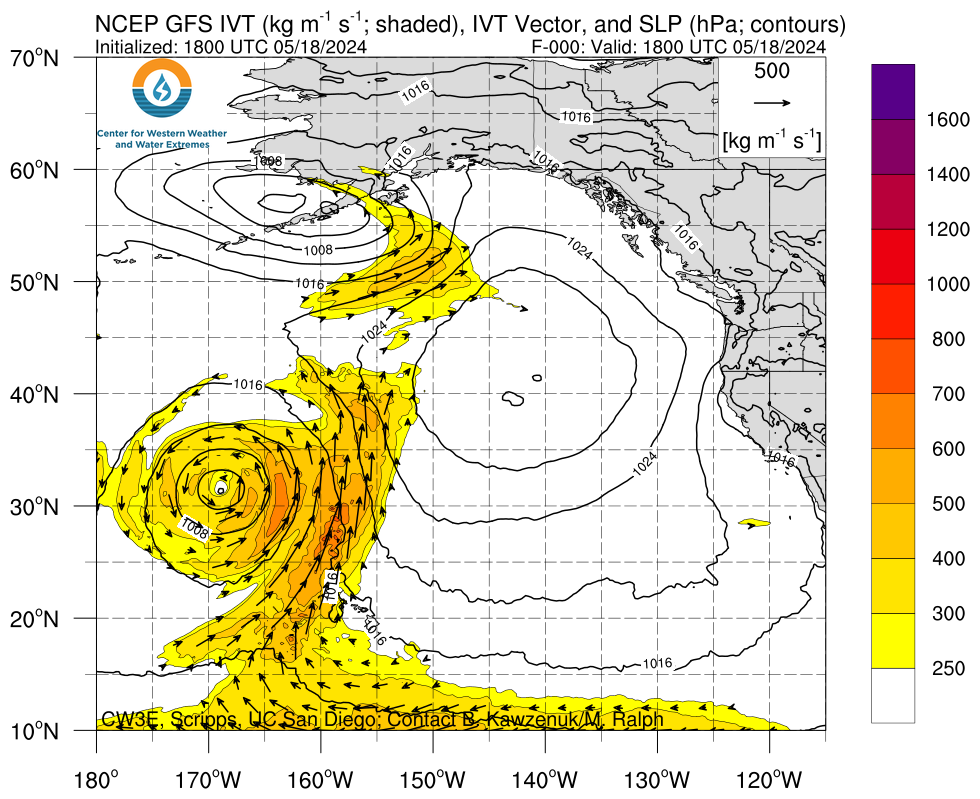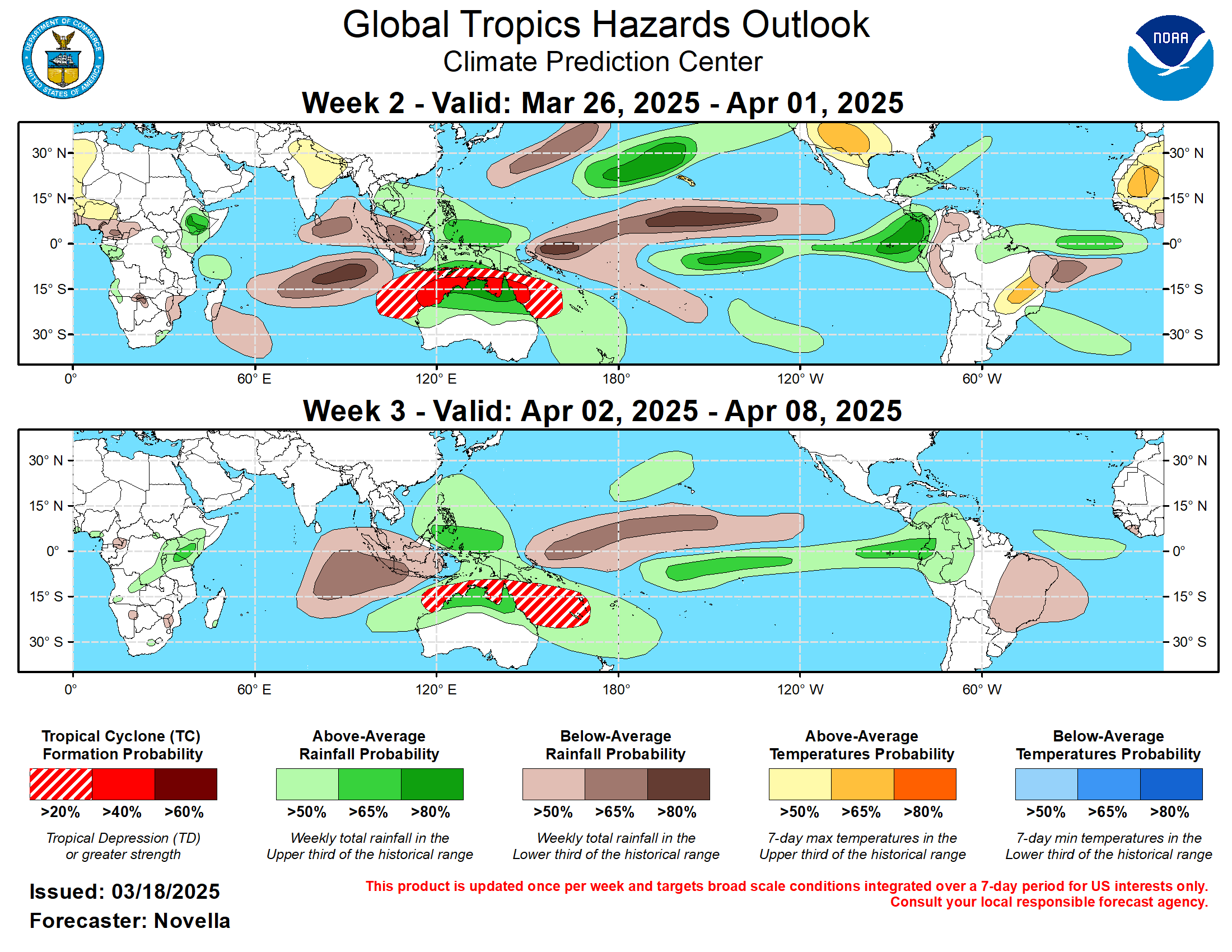This article focuses on what we are paying attention to in the next 48 to 72 hours. The article also includes weather maps for longer-term U.S. outlooks and a six-day World weather outlook which can be very useful for travelers.
First the NWS Short Range Forecast. The afternoon NWS text update can be found here after about 4 p.m. New York time but it is unlikely to have changed very much from the morning update. The images in this article automatically update.
Short Range Forecast Discussion
NWS Weather Prediction Center College Park MD
Sun Jun 30 2024
Valid 12Z Sun Jun 30 2024 – 12Z Tue Jul 02 2024…Dangerously hot conditions will continue for the Southeast through the
end of the weekend, while simmering heat builds across the southern Plains
and California’s Central Valley early this week……Severe thunderstorm and heavy rain threat for the East Coast today…
…Showers and thunderstorms for the Four Corners/Southwest over the next
few days; wet weather returns to the upper Midwest by Monday…The transition to July will continue to feature areas of potentially
dangerous heat throughout parts of the southern U.S. and California. At
the upper levels, higher pressure over the southern Plains and lower
Mississippi Valley will focus much of the heat over the south-central U.S.
over the next few days before ridging begins to build toward the West
Coast by Tuesday. This equates to high temperatures in the mid-to-upper
90s today from the Mid-Atlantic to the southern Plains. This level of heat
and the potential for maximum temperatures into the low 100s are expected
to remain throughout the south-central U.S. through at least Tuesday,
while much of the Southeast and Mid-Atlantic cools off behind a cold
front. Overnight temperatures are expected to be quite warm over the
southern Plains and not offer much time for relief after scorching daytime
temperatures. In fact, several daily warm minimum temperature records
could be broken/tied over the next few days in this region. Excessive Heat
Warnings and Heat Advisories currently stretch from Texas to New Jersey.
For California, a dangerous and long-duration heat event is forecast to
begin on Tuesday as high temperatures soar into the triple digits, which
has prompted Excessive Heat Warnings and Watches to be posted. These
readings will impact interior valley locations and areas away from the
immediate coastline. Residents and visitors are urged to follow proper
heat safety as this level of heat could be deadly for anyone without
effective cooling.Thunderstorms and instances of heavy rain are forecast to impact parts of
the East Coast, Midwest, and Four Corners/Southwest over the next few
days. A potent cold front ushering in a comfortable airmass to the Great
Lakes and Midwest today will continue to trek towards the East Coast while
sparking numerous showers and thunderstorms. A few storms could turn
severe between Maine and the Carolinas, with damaging wind gusts the
primary weather hazard. Heavy rain could also lead to isolated flash
floods between New England and the Southeast. This same frontal boundary
is anticipated to focus additional thunderstorm chances on Monday across
the Southeast. The flash flood threat is expected to be highest across
coastal South Carolina and southeast Georgia, where slow-moving storms
could produce a few inches of rainfall in a very short period of time.The other notable weather system impacting the Lower 48 at the midway
point of the year is forecast to push from the Intermountain West to the
upper Midwest by early this week. Lingering rainfall chances and the
potential for flash flooding is expected to continue as the upper trough
traversing the western U.S. maintains a fresh flow of moisture-rich air
into the Southwest and southern Rockies. Flash Flood Watches remain in
effect across parts of New Mexico, Colorado, and Utah. On the dry side of
the system, gusty winds and low relative humidity are anticipated to
create Critical Fire Weather across parts of the central Great Basin
today. Meanwhile, areas of robust thunderstorms could turn severe by this
evening throughout the northern High Plains as an area of low pressure
develops. This low pressure system is then forecast to spread unsettled
weather into the northern Plains and Upper Midwest on Monday. Scattered
severe thunderstorms are possible, with an elevated threat for tornadoes,
damaging wind gusts, and large hail over parts of central Nebraska. For
the upper Midwest, any heavy rain will be unwelcome as ongoing river
flooding impacts the region. Any additional rainfall could exacerbate
flooding concerns, with the potential for numerous thunderstorms creating
an increasing flash flood risk for this part of the country. As the system
continues to progress eastward on Tuesday and an attached cold front slows
its forward progress over the Midwest and central Plains, additional
chances for severe weather and heavy rain are expected to continue.
To get your local forecast plus active alerts and warnings click HERE and enter your city, state or zip code.
Learn about wave patterns HERE.
Then, looking at the world and of course, the U.S. shows here also. Today we are looking at precipitation.
Please click on “Read More” below to access the full Daily Report issued today.
| Notices: What would you like to learn about? Please provide that to me via the comment section at the end of the article. |
Now more detail on the 48-Hour Forecast (It is a 48 to 72 Hour Forecast actually)
Daily weather maps. The Day 1 map updates twice a day and the Day 2 and 3 maps update only once a day. These maps update automatically. But if that does not happen, you can get updates by clicking HERE
TODAY (or late in the day the evening/overnight map will appear) (Key to surface fronts shown on maps and you will then also be able to insert a city name or zip code and get a local NWS forecast).
TOMORROW
NEXT DAY
We have a new animation of the forecast which shows how things may play out over the next 60 hours. To update click ANIMATION. Doing so will get you to the dashboard. You can then step through the animation or hit LOOP on the upper right of the display. You will have to hit the back arrow ← at the top left on your computer to get back into this article. It is a little more trouble than before but I think NOAA scrapped the animation routine I was using so we have to keep up with “progress”.
The NWS Climate Prediction Center’s: Watches, Warnings, and Advisories plus other information can be found HERE. That takes you to the NWC Severe Weather Site. From there you can select among many categories of information. Remember to hit the back arrow ← at the top left of your screen to return to this article.
ATMOSPHERIC RIVERS
This tells us what is approaching the West Coast. Click HERE to update If I have not gotten around to doing the update. Here is some useful information about Atmospheric Rivers.
Below is the current five-day cumulative forecast of precipitation (Updates can be found HERE)
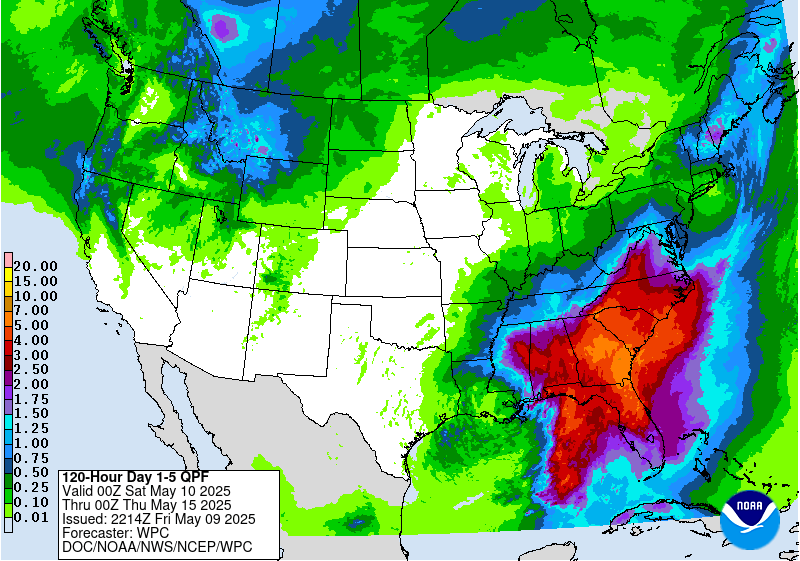
Ski SnowReports will Resume in the Fall.
Now we look at Intermediate-Term “Outlook” maps for three time periods. Days 6 – 10, Days 8 – 14, and Weeks 3 and 4. An outlook differs from a forecast based on how NOAA uses these terms in that an “outlook” presents information as deviation from normal and the likelihood of these deviations.
Below are the links to obtain updates and additional information. They are particularly useful if you happen to be reading this article significantly later than when it was published. I always try to provide readers with the source of the information in my articles. These links may also be useful for those viewing this article on a cell phone or other small screen.
| Days 6 – 10 (shown in Row 1) | Days 8 – 14 (Shown in Row 2) | Weeks 3 and 4 (Shown in Row 3 but updates only on Fridays) |
| https://www.cpc.ncep.noaa. gov/products/predictions/610day/ | https://www.cpc.ncep .noaa.gov/products/predictions/814day/ | https://www.cpc.ncep.noaa.gov/products/predictions/WK34/ |
Showing the actual maps. They should now update automatically. The Week 3 – 4 Outlook only updates on Fridays. So below is what I call the Intermediate-term outlook. On Fridays, it extends out 28 Days. That declines day by day so on Thursday it only looks out 22 days until the next day when the Week 3 – 4 Outlook is updated and this extends the outlook by one additional week.
| 6–
10
|
|
|
| 8–
14 |
|
|
| 3–
4 |
|
|
HAZARDS OUTLOOKS
Click here for the latest complete Day 3 -7 Hazards forecast which updates only on weekdays. Once a week probably Monday or Tuesday I will update the images. I provided the link for readers to get daily updates on weekdays. Use your own judgment to decide if you need to update these images. I update almost all the images Friday Night for the weekend edition of this Weather Report. So normally readers do not need to update these images but if the weather is changing quickly you may want to.
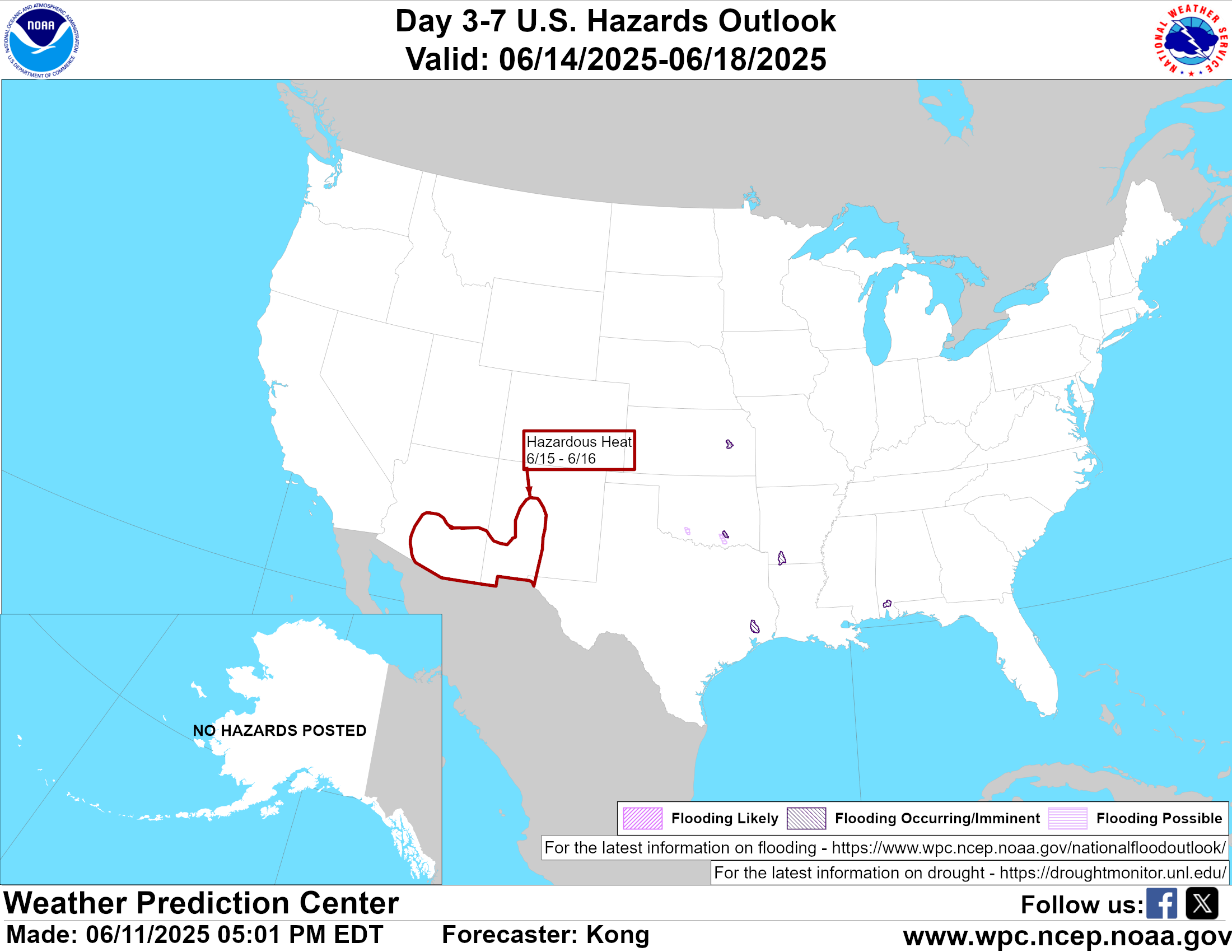
Temperature month to date can be found at https://hprcc.unl.edu/products/maps/acis/MonthTDeptUS.png
Precipitation month to date can be found at https://hprcc.unl.edu/products/maps/acis /MonthPNormUS.png
World Forecast [that website is has been intermittent so be patient]
Below are the Day 1 -3 and 4-6 forecasts for temperature and precipitation. Updates and much additional information can be obtained HERE
World Temperature Anomalies

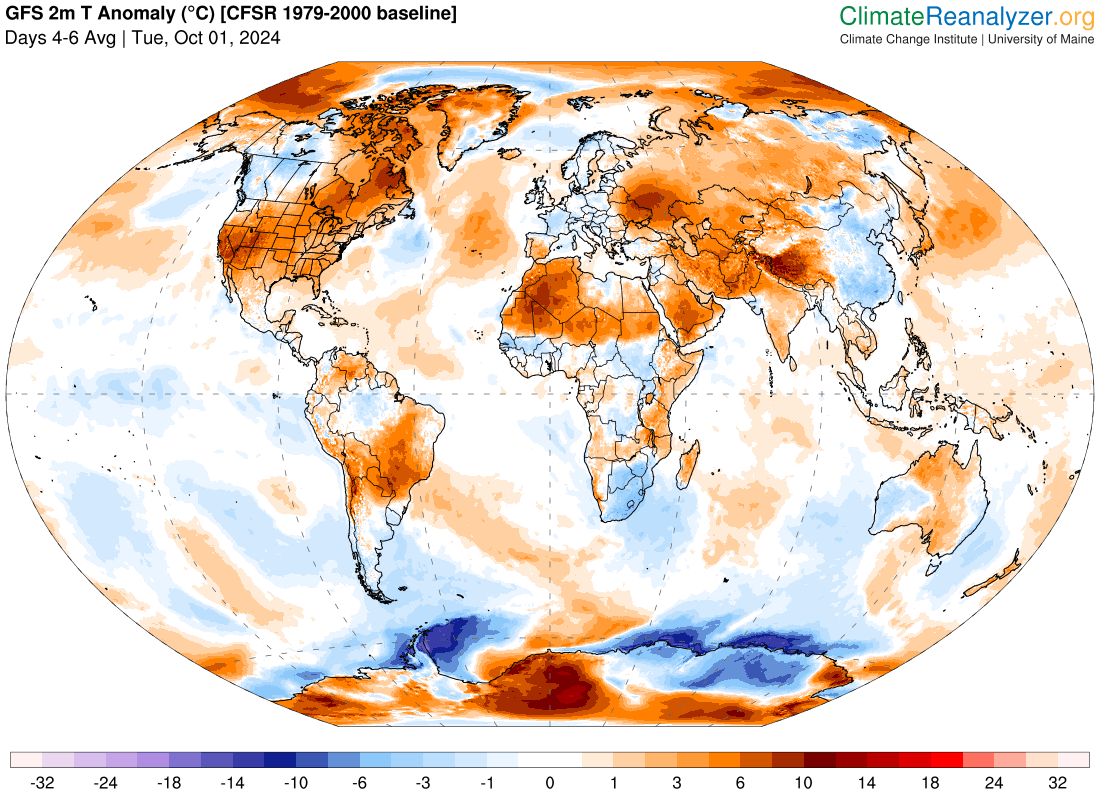
World Accumulated Precipitation
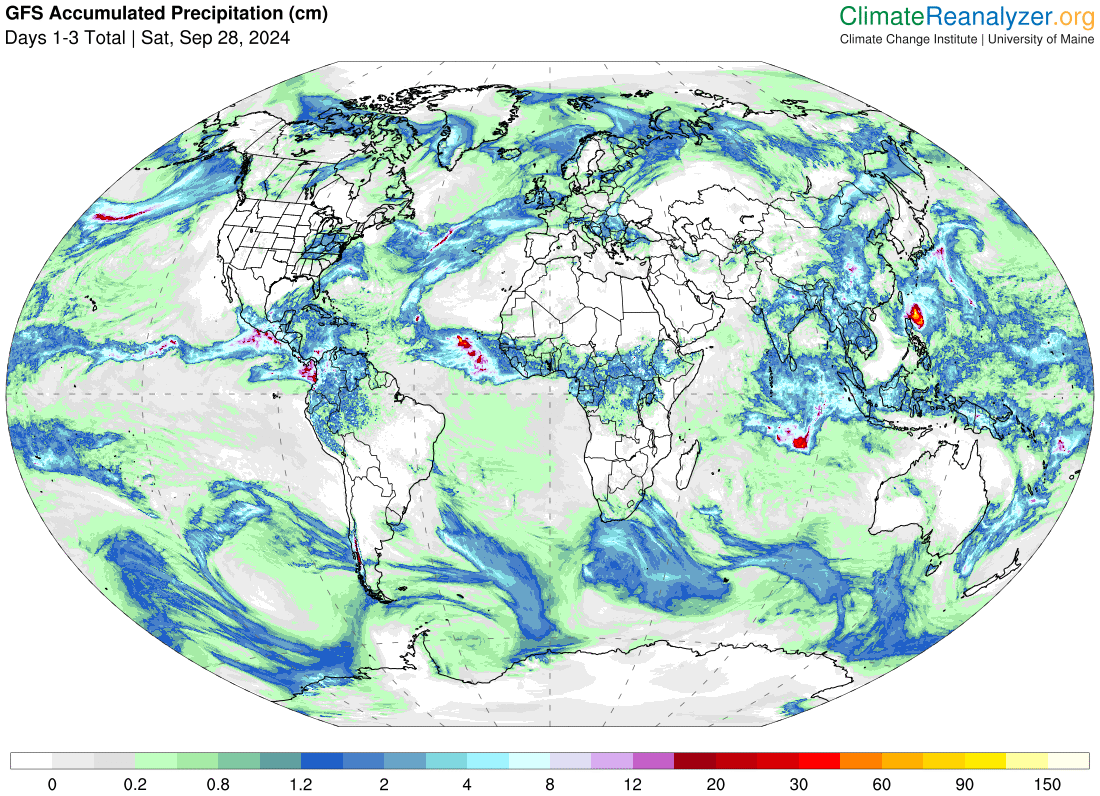

This information is provided by the University of Maine. They draw upon many different sources. There is a lot of information available at the link provided. I have just provided two useful forecasts. There are probably over a hundred different forecasts available from this source.
Worldwide Tropical Forecast (This is a NOAA Product)
This graphic updates on Tuesdays) If it has not been updated, you can get the update by clicking here Readers will only have to do that if they are reading this article much later than the date of it being published.
Information on Tropical Storms can be found HERE. Western Pacific information can be found HERE. Note that unless there is an out-of-season storm the below images will not update until the National Hurricane Center starts their seasonal update of these maps on June 1. I include them simply because there can be an out-of-season event in which case it should show up in these maps.


–
| I hope you found this article interesting and useful. |

